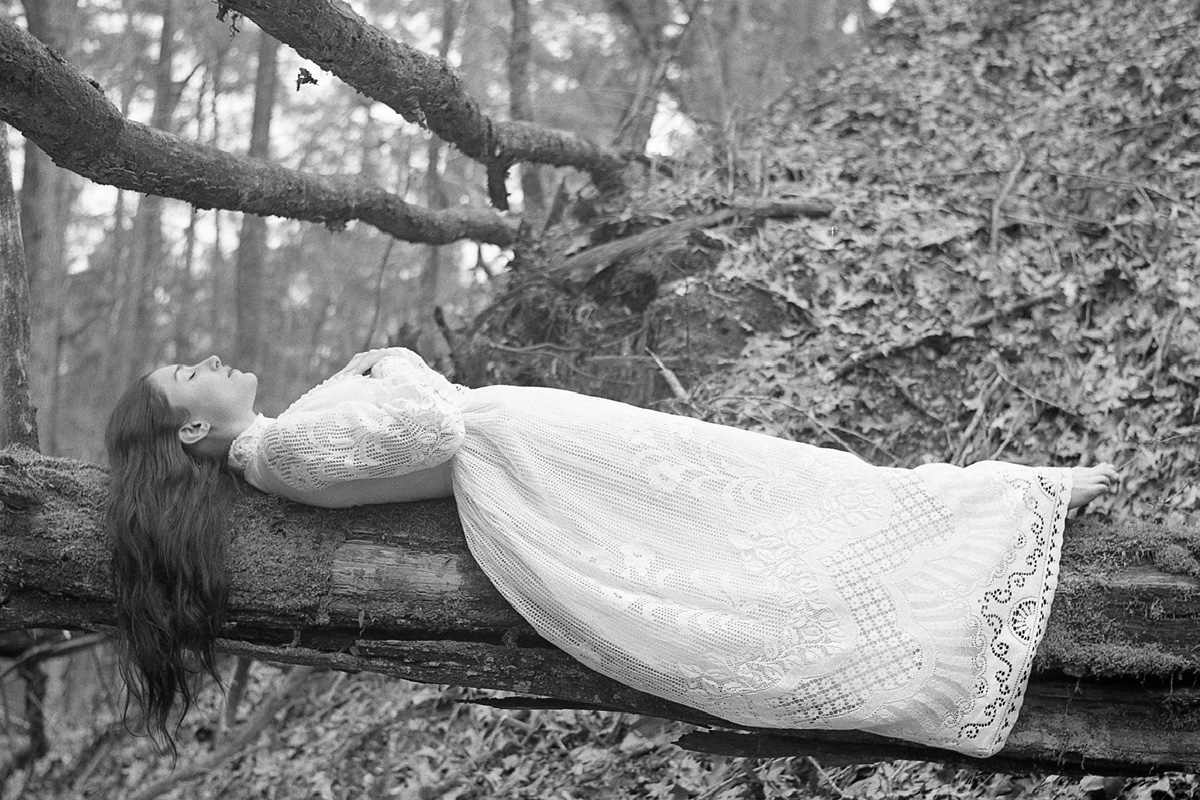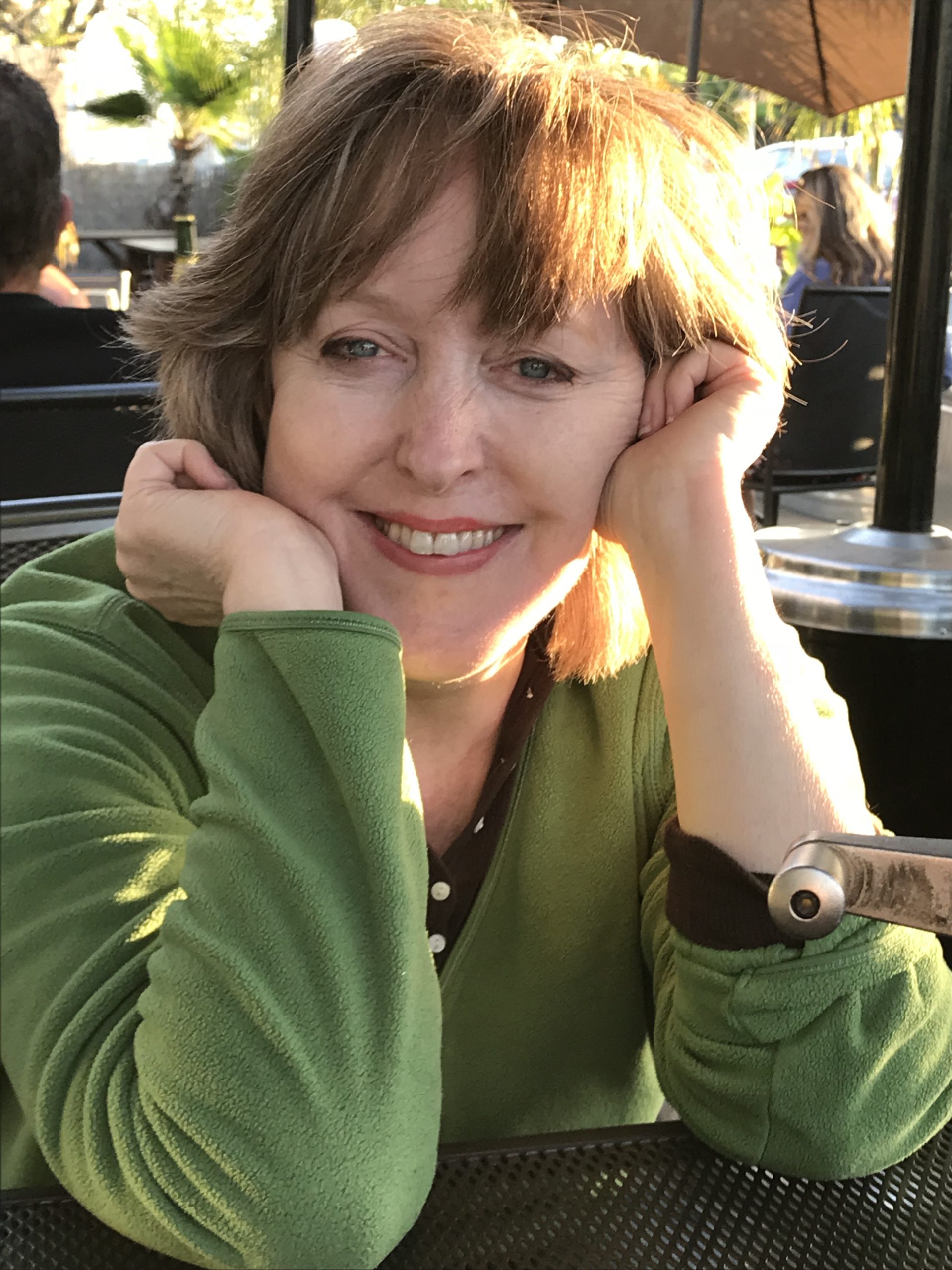Evocative black and white scenes share a landscape familiar to Mississippians—one of magnolias and cemeteries, thickets and woods, old iron gates and steep natural bluffs. The figure in them, clad in black like a mourner or white like a spirit, is both one with and apart from the surroundings, suggesting melancholy, memory and an ethereal connection that hovers just beyond our focus.
The fine art photographs of Double Negative, the husband-wife team of Amanda and Jason Ray, earned great exposure in 2020 with 33 publications in Vogue Italia’s prestigious and highly competitive PhotoVogue platform. All were taken in their native Mississippi as the world coped with the isolation and loss in the COVID-19 pandemic—and they wrestled with the same, plus more.
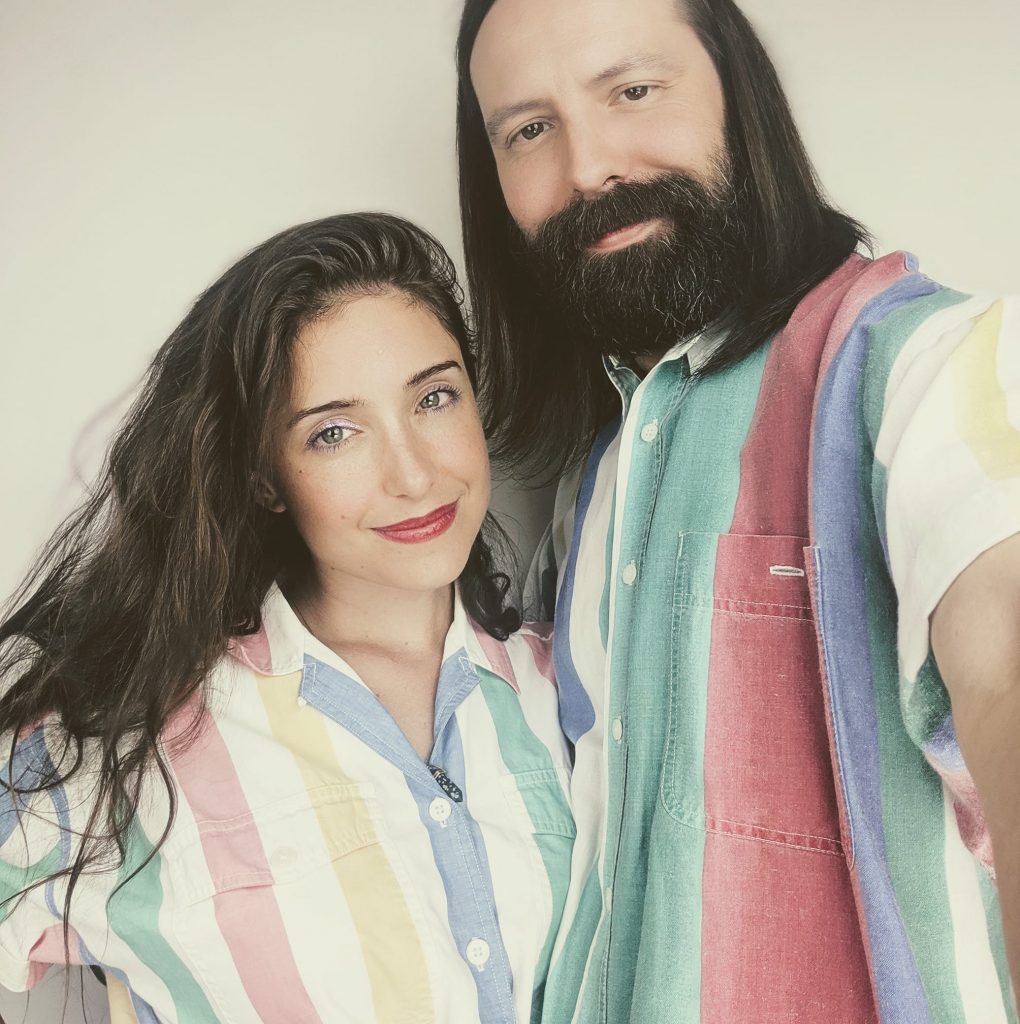
Jason, 35, is the photographer, and Amanda, 32, is the creative director and model of Double Negative Photography.
They grew up in Florence and first met as teenagers at a Pink Floyd laser light show at Davis Planetarium in downtown Jackson. Both studied at Hinds Community College before taking off to focus on art in the real world, and they married in 2007. After about a decade in Austin pursuing art and photography, family health concerns pulled the Rays back to their home state.
Old School Revolution
“When we moved back to Mississippi, that’s when we kind of ditched the digital,” Jason says. Dissatisfied with digital photography, and hankering for the straightforward yet mysterious allure of classic photographs, they researched alternatives. They found a medium format Yashica Mat-124G twin lens reflex camera from the 1970s, and rediscovered real film photography.
“We felt like it was dying art, and people weren’t utilizing it anymore. And it’s really revolutionized our photography completely,” Amanda says. “The very first film photograph that we submitted to Vogue, they published. … We just took that as a sign.”
Last time a submission of theirs scored publication in PhotoVogue was a digital image back in 2015. In 2020, they hit a run of one publication a month, sometimes two or more—quite a feat, considering the platform’s reach to tens of thousands of photographers worldwide. A change last year limited PhotoVogue submissions to two images per week, Jason says, making it even more exclusive.
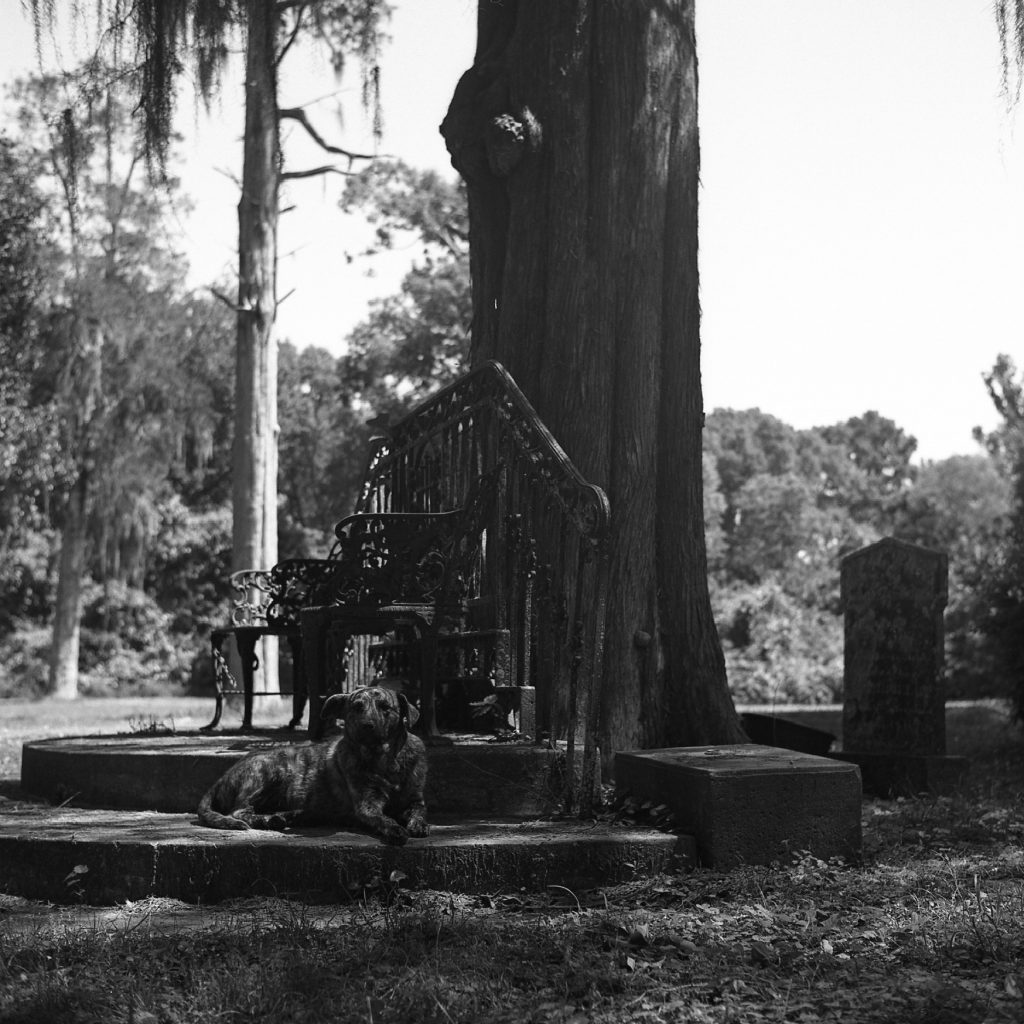
He recalls a mindset, back in Austin, of digital photography shoots requiring someone for hair, someone for makeup, extensive planning and more. “Since we both obviously live together … we said, ‘Let’s not worry about hair. Let’s not worry about makeup. Let’s just go, and not have to make all these plans.’”
A minimalistic approach has suited these fine art photographic pursuits, which are mostly in black and white. “We have no assistants. It’s just me with the camera and Amanda being the creative director and the model for the shoot,” Jason says.
“So, we’ve got to find the right light without someone bouncing it on us. There’s no hair and makeup. It’s just us, and it’s naked, and we like that, because with film, it seems naked. Once you shoot it, yes, you can manipulate it a little bit, but we don’t.
“It’s really made us better. We had to get better,” Jason says. “Everything is just a little more delicately balanced.”
The throwback suits their lifestyle, too. The Rays fell for the “dreary” and “magical” beauty of the Pacific Northwest on a previous visit and relocated to the Portland, Ore., area this past November. Amanda likens their home to a 1970s cottage. “Everything we have is old or vintage. We just have a really deep fondness for old school,” she says. They both work from home for a company offering virtual support and management for a variety of clients.
Amanda sets the scene and models in most all their photography. “Sometimes, our daughter will step in,” she says of Ruby, 5. “She gets really mad if we don’t take her creative suggestions. It’s quite adorable. She’s actually posed me in several instances, and those photos were very much published.” Occasionally, they’ll take pictures of others, such as Mississippi’s first married gay couple.
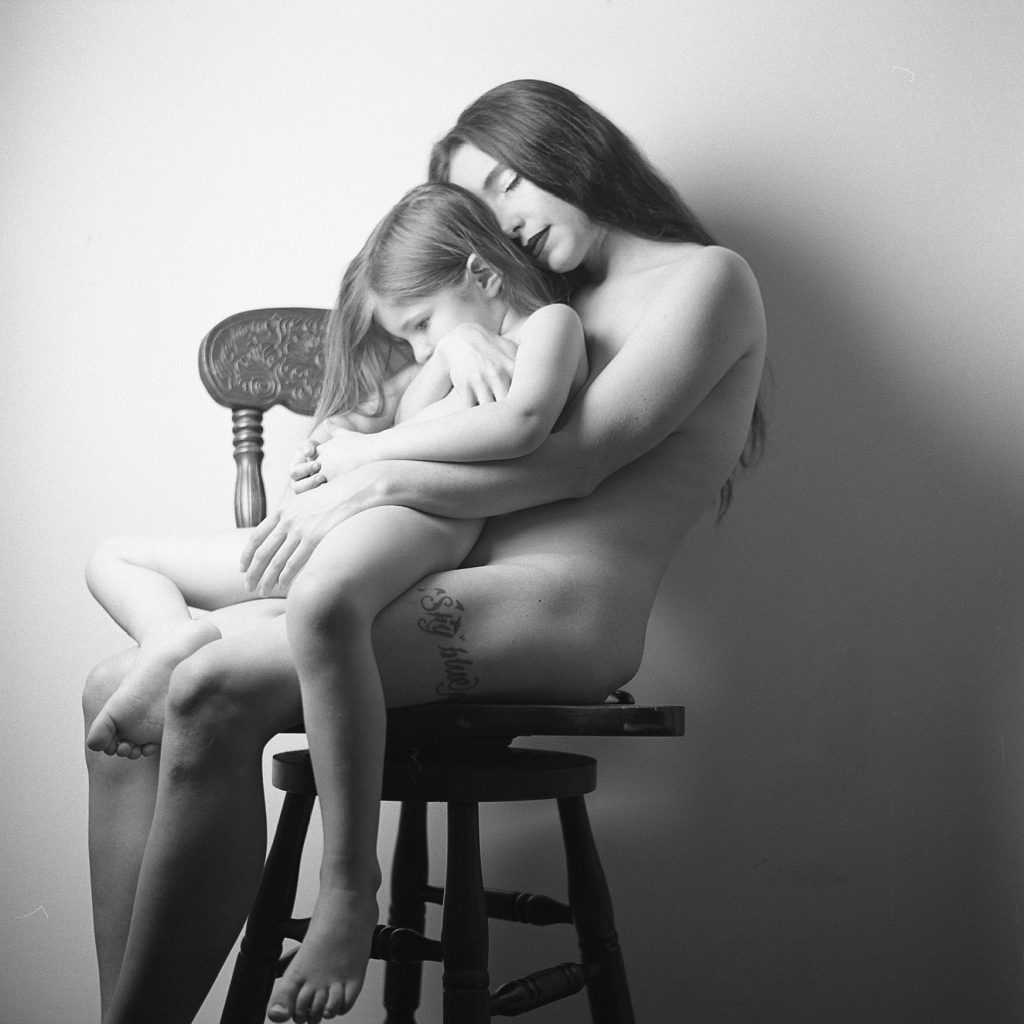
Photographs over the past year in Mississippi cemeteries and natural landscapes are part of their “Flesh and Bone” series. “We liked the idea of taking a living human being, or just a living being in general, in a very natural, unmade-up sense, and photographing it in a setting that’s more macabre—like a cemetery—and combining the living with the dead in a way that feels peaceful,” Amanda says.
“With the current climate with COVID and everything, I just feel like there’s a lot of fear associated with death right now. …That’s sad, because cemeteries, especially in Mississippi because they’re so ancient and old and beautiful, are really peaceful, lovely places,” she says. “If we could even take a small step in taking the fear away from death, at least in a visual way, maybe that could give people some comfort.”
“‘Harold and Maude’ is one of our favorite movies,” Jason chimes in, laughing. ‘There’s also that.”
A Saving Grace
The Rays had been living in Mississippi temporarily to help family during her mom’s serious illness, and then COVID hit, compounding an already difficult and emotionally taxing year. Plans to go to the United Kingdom, where Amanda was approved for a creative writing program and they were both eager to explore the region’s stone circles, were put on hold. Hitting the road with the vintage Yashica became a nice break, with cemeteries as the destination.
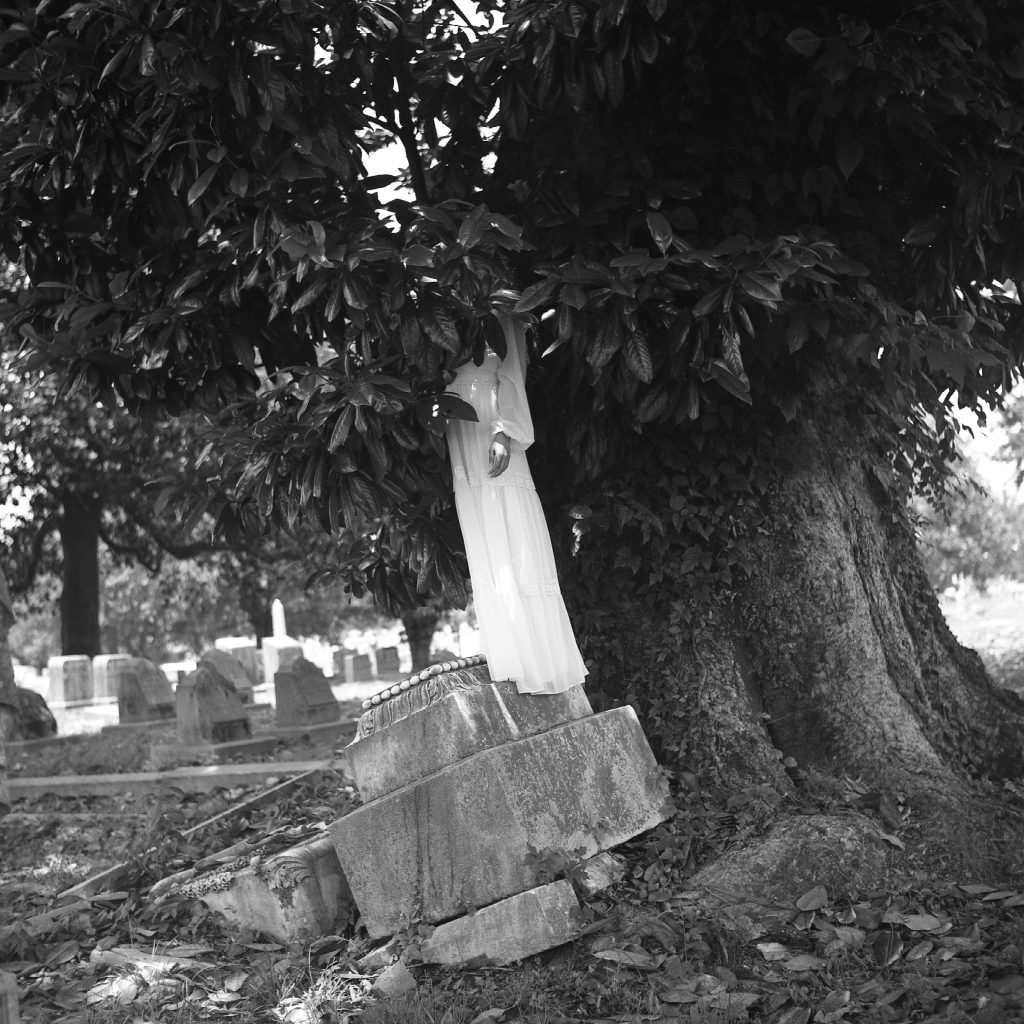
“No. 1, they were one of the only places open during COVID,” Amanda says.
“We didn’t think anyone would complain about, you know, the 6-feet rule,” Jason jokes. Or, scold them if they weren’t masked up.
“It’s so peaceful in the cemeteries, and it was so isolated,” Amanda says. “We found that we could really just kind of blend with that energy. We were already mentally there … in that mindset of death and spiritually.”
Vicksburg National Military Park, a site they’d both visited often as children, was their first stop. “All the tombstones in a perfect line, there’s just a lot of texture there,” Amanda says. They researched other sites with history and graveyards. Rocky Springs was next. Then Port Gibson, Natchez and more.
They explored nature, too, nearby in Cleary Heights and in jaunts to Red Bluff and Tishomingo. In some of the photographs, the figure’s near seamless link with landscape calls woodland spirits to mind. The Rays note the influences of artists such as Brian Froud, best known for the book “Faeries” and his work for “Labyrinth” and “The Dark Crystal.”
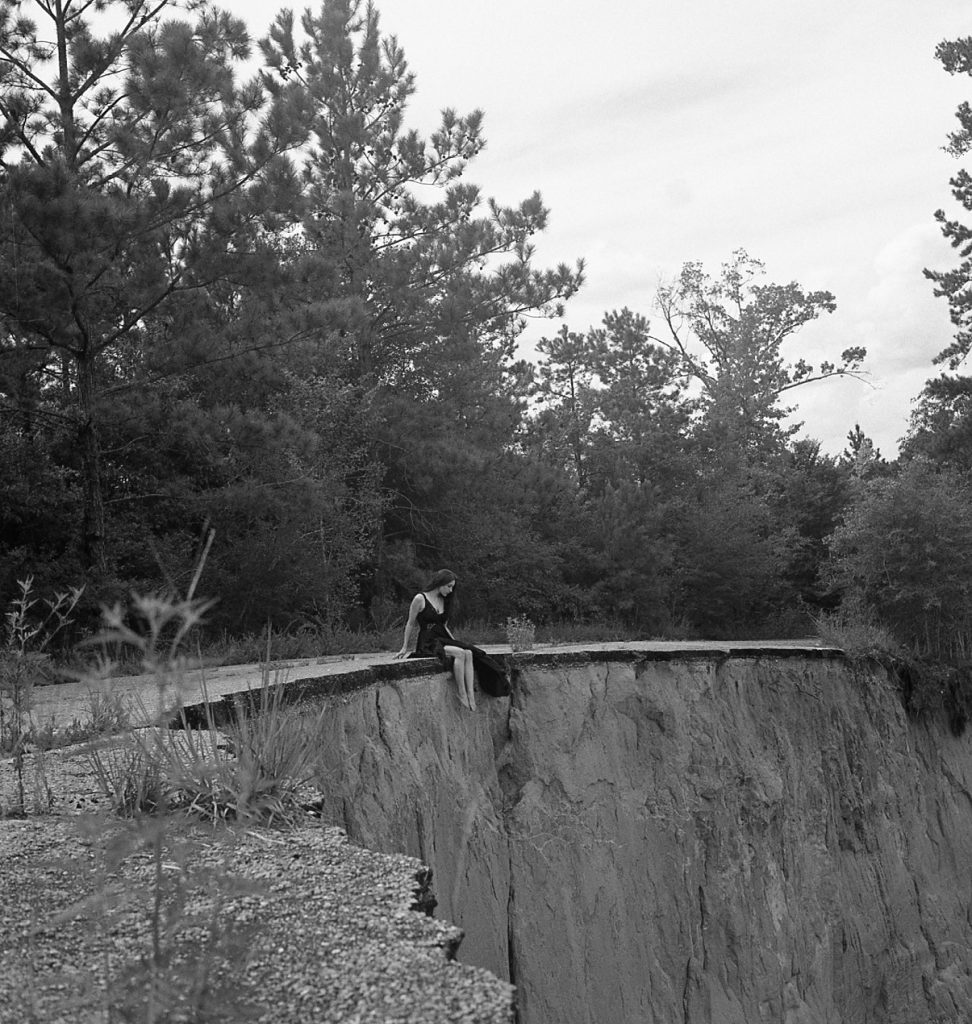
“We try to embody that in our work,” Amanda says.
“None of it was really premeditated—almost like we were led there,” Jason says. “I don’t want to sound too cuckoo for Cocoa Puffs, but when we were doing it, we threw out the old models that we had followed,” and let the setting, poses and environment lead the way.
His Yashica camera, which doesn’t do double exposures, will nonetheless manage to come up with one occasionally, he says. It only happens on a first frame, when after clicking the shutter, he can’t crank the film advance wheel.
“We’ve gotten maybe a dozen double exposures so far,” he says. “And, they’ve only happened—this may be just coincidental—either at cemeteries, or at places where there were once a lot of people,” such as Chautauqua Park in Crystal Springs. When the couple jokes about the possibility of spirits at play, it’s not in a creepy way. After all, they’d previously gone on ghost hunts to Confederate cemeteries in Raymond.
“When you get down to it, it’s really a mechanical failure, but the camera’s not failing,” he says. “It’s just, we get a double exposure every now and then. And, that’s just really cool.”
At the moment, their fine art photography is strictly a creative pursuit, and the Vogue publications in 2020 represent a pinnacle of their success to date.
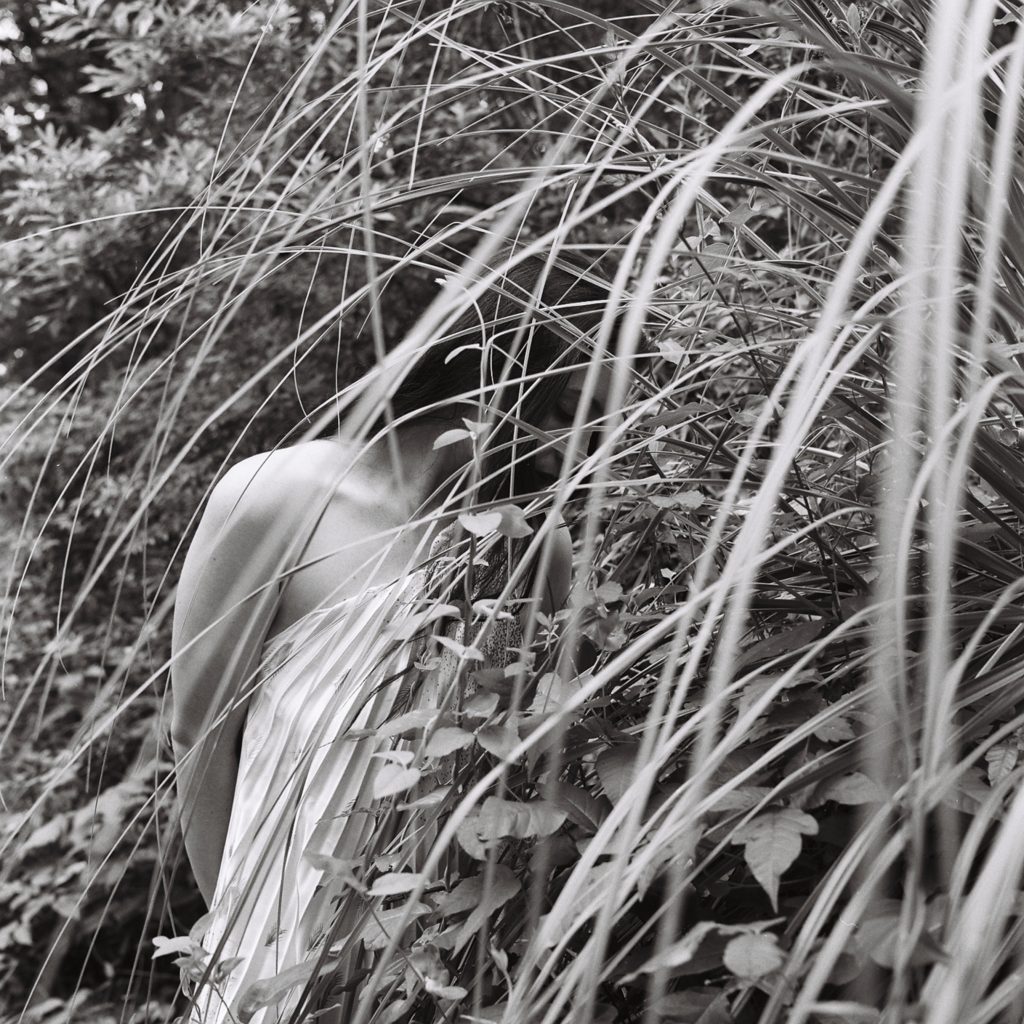
“We’re really proud of it,” Amanda says. Feedback has been positive, too, they say, with support coming from some surprising corners. “Even my grandma, she’s just like, ‘Oh, ‘I love that picture of you when you were naked by the tombstone,’” she shares with an affectionate laugh.
Since moving into film and developing this process, “we constantly talk about how we feel like it’s almost saved our lives,” Amanda says, by countering the depression associated with fear of death and family loss, with weekend travels to more serene settings.
“It just gave us so much hope to express ourselves creatively, and work together and just have a moment where we’re not burdened by all of this stress and anxiety and everything going on in the world and everything going on in our families and our personal lives,” she says.
“You can just be in this serene, peaceful environment and focus on art for art’s sake. … It was just so uplifting.”

